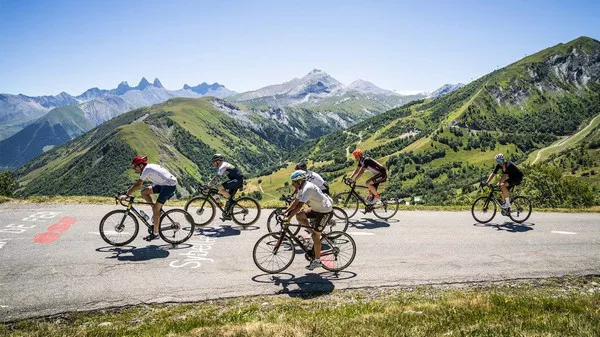Cycling is a popular activity enjoyed by millions worldwide, whether as a means of transportation, a form of exercise, or a competitive sport. One common question among cyclists, particularly those new to the activity, is what constitutes a good average speed when riding. While the answer to this question may vary depending on several factors, including terrain, weather conditions, type of bicycle, and individual fitness level, understanding the concept of average speed and its significance can provide valuable insights for cyclists of all levels.
Understanding Average Speed
Average speed refers to the total distance traveled over a specific period divided by the time it took to cover that distance. In the context of cycling, it is typically measured in miles per hour (mph) or kilometers per hour (km/h). For example, if a cyclist covers a distance of 20 miles in one hour, their average speed would be 20 mph.
It’s essential to recognize that average speed can fluctuate throughout a ride due to various factors. Uphill sections, headwinds, rough terrain, and traffic congestion can all contribute to a decrease in speed, while downhill sections, tailwinds, smooth roads, and favorable weather conditions can lead to an increase in speed. Therefore, assessing average speed requires considering the overall terrain and conditions encountered during a ride.
Factors Influencing Average Speed
Several factors influence a cyclist’s average speed, making it challenging to establish a universal standard for what constitutes a good average speed. Some of the key factors include:
1. Terrain: The elevation profile of the route significantly impacts average speed. Climbing steep hills requires more effort and reduces speed, while descending allows cyclists to reach higher speeds with less exertion.
2. Weather Conditions: Wind speed and direction, temperature, humidity, and precipitation can all affect a cyclist’s speed. Headwinds pose a significant challenge, requiring more energy to maintain speed, while tailwinds provide a helpful push.
3. Type of Bicycle: The type of bicycle being ridden can influence average speed. Road bikes, with their lightweight frames and narrow tires, are designed for speed and efficiency on paved roads, while mountain bikes are better suited for off-road trails with rough terrain.
4. Fitness Level: An individual’s fitness level plays a crucial role in determining their cycling speed. Well-trained cyclists with high levels of cardiovascular fitness and muscular endurance are likely to maintain higher average speeds than beginners or those with lower fitness levels.
5. Experience and Technique: Experienced cyclists often have superior bike-handling skills, pacing strategies, and knowledge of efficient riding techniques, allowing them to maintain higher average speeds compared to novices.
What Constitutes a Good Average Speed?
The notion of what constitutes a good average speed is subjective and varies widely depending on individual circumstances and goals. For some cyclists, achieving a specific average speed may be a personal milestone or a measure of progress in their training regimen. Others may prioritize enjoying the ride and exploring their surroundings over achieving a high average speed.
In general, average speeds for recreational cyclists typically range from 10 to 20 mph (16 to 32 km/h), depending on the factors mentioned earlier. Beginners and casual riders may find themselves on the lower end of this spectrum, while more experienced cyclists and those participating in group rides or competitive events may achieve higher average speeds.
It’s essential to set realistic expectations based on individual capabilities and riding conditions rather than comparing oneself to others. Factors such as age, fitness level, bike type, and terrain should all be taken into account when assessing average speed.
Tips for Improving Average Speed
While average speed is influenced by various factors, there are several strategies cyclists can employ to improve their performance:
1. Train Consistently: Regular training rides focused on building endurance, strength, and speed are key to improving average speed over time. Incorporating interval training, hill repeats, and long rides into a training program can help enhance overall cycling fitness.
2. Optimize Bike Setup: Ensuring that your bicycle is properly fitted to your body proportions and preferences can improve comfort, efficiency, and aerodynamics, ultimately leading to higher average speeds. Components such as saddle height, handlebar position, and tire pressure can all impact performance.
3. Pace Yourself: Learning to pace oneself effectively throughout a ride, particularly on long or hilly routes, can help maintain a steady average speed. Avoid starting too fast and burning out early, and instead aim for a sustainable effort level that allows for consistent performance.
4. Focus on Technique: Refining your cycling technique, including pedaling efficiency, gear selection, cornering, and drafting, can contribute to improved average speed. Smooth, fluid pedaling strokes and proper body positioning can help maximize power output and minimize energy expenditure.
5. Stay Consistent: Consistency is key to long-term improvement in cycling performance. By setting achievable goals, tracking progress, and maintaining a regular training schedule, cyclists can gradually increase their average speed over time.
Conclusion
While the concept of what constitutes a good average speed when cycling may vary depending on individual circumstances and goals, understanding the factors that influence average speed and employing strategies to improve performance can benefit cyclists of all levels. Whether riding for recreation, fitness, or competition, setting realistic expectations, focusing on consistent training, and enjoying the journey are essential elements of a fulfilling cycling experience. Ultimately, the most important measure of success is not the speed at which one rides but the joy and satisfaction derived from being on two wheels and exploring the world under one’s own power.

